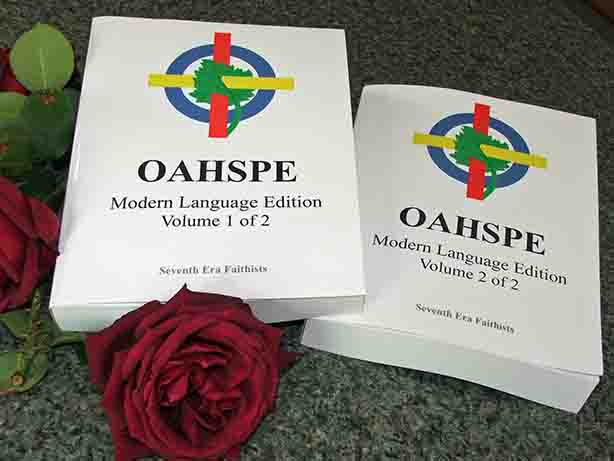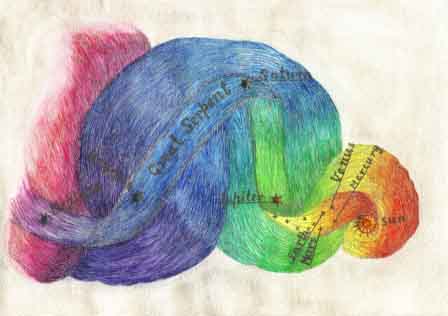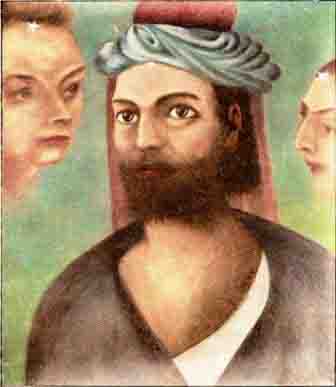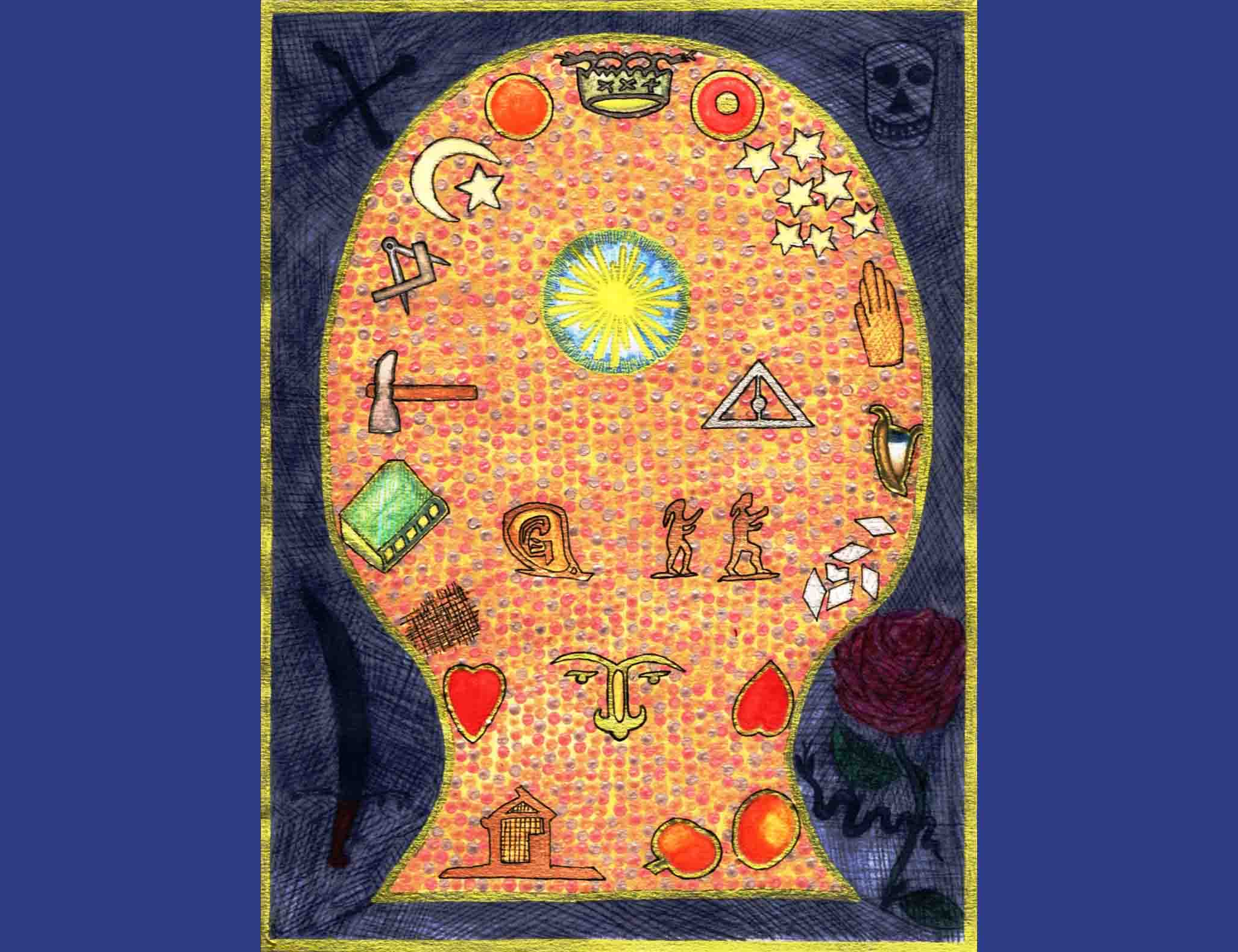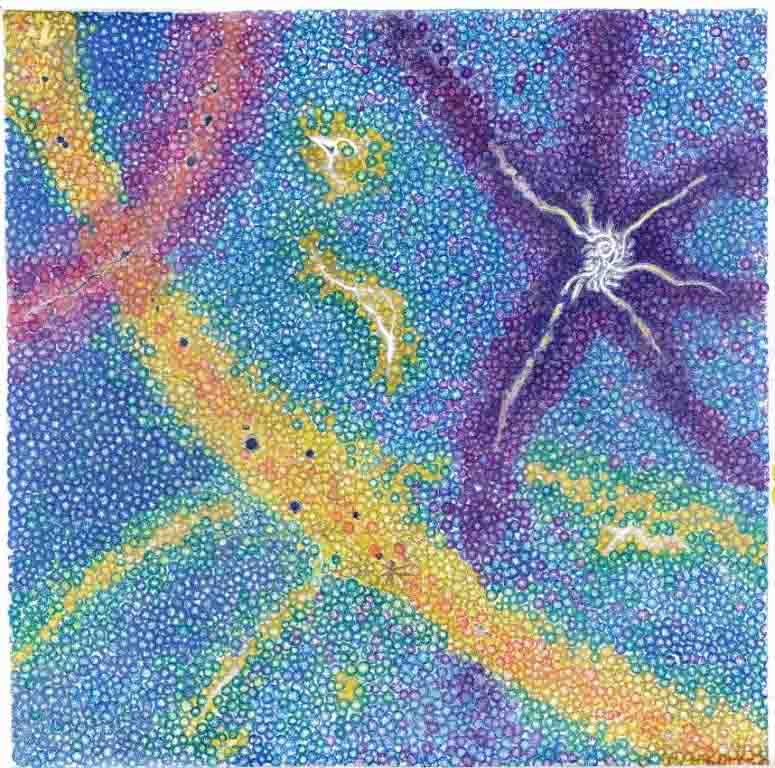OAHSPE proclaimed as a New Bible
Soon after Oahspe was published in 1882, distribution outlets and reviews were printed in Oahspe Publishing Association Literature.
Photocopies of pages from Oahspe Publishing Association material indicate that Oahspe was discributed through prominent bookstores in New York, Chigaco, Philadelphia and London. And reviewed by prominent widely circulated newspapers.
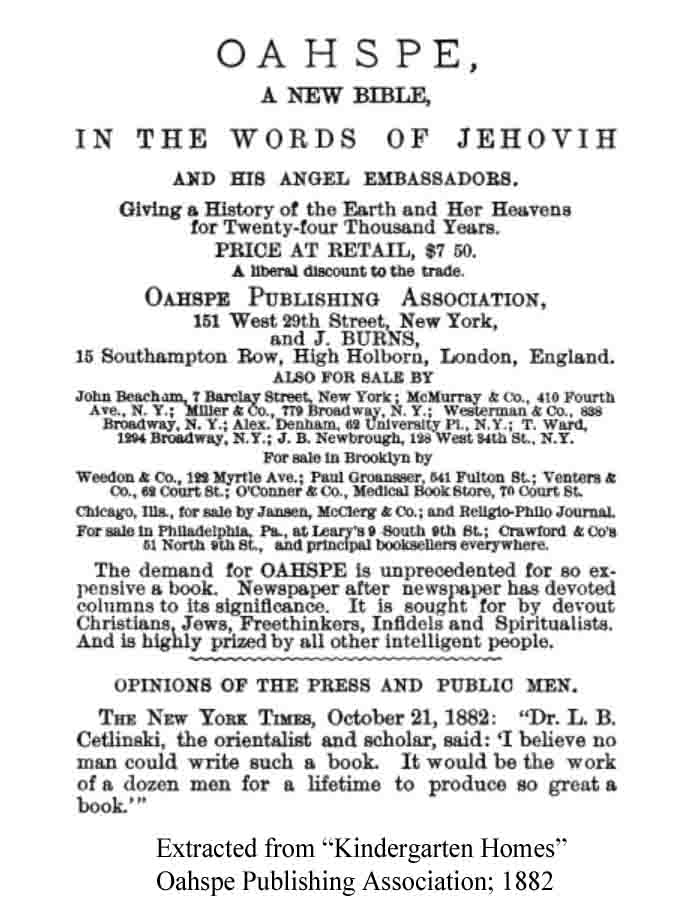
The New York Times, 21st October, 1882
Dr Newbrough's "Oahspe." (Published in The New York Times on 21st October 1882):
AN "INSPIRED" VOLUME GIVING THE HISTORY OF 24,000 YEARS.
Several persons gathered at the house of Dr. J.B. Newbrough, No. 128 West Thirty-fourth street, last evening, to examine a new Bible, called Oahspe, which was written by Dr Newbrough.
The New Bible is supposed to give the history of the earth and the heavens for 24,000 years, and is written "in the words of Jehovih and his Angel Ambassadors." It is a large quarto volume of over 900 pages, and is published by an association consisting of seven persons. Dr. Newbrough, after the book had been examined by those present, told the story of its writing, prefacing his remarks by saying that its object was not to supplant other Bibles and religions, but to set forth a history of all religions, going back 24,000 years. He said it was for all races and peoples, and explained the private affairs of angels and their relation to mortals. It showed why heaven was worth living for. He also said that he was not familiar with ancient religions or languages before he wrote the book. He had written it automatically, his mind having no connection with what he was writing. In fact, he did not know from one day to another what he was penning on paper.
He began the work in the Spring of 1880, an impression coming over him that it must be done. When he began a bright light settled over his fingers. This would last 15 to 30 minutes, and when it disappeared he could write no more. It always left his fingers cold and stiff. The work also could only be satisfactorily carried on at sunrise. This light he continued, seemed to impress him, strongly he thought it was similar to the light in the burning bush which talked with Moses and which was the most common way of revelation to the sons of men. He continued his work for a year lacking two weeks. "I could not read it, for the light would not let me" he said, "and I did not know the contents of the book until it was ready for type."
After he had finished the manuscript, he said money began to come in from entire strangers, who said they were impressed to send it to him. From England $1,000 came, and about $2,500 was received from Boston. One roll of greenbacks was simply wrapped in a piece of paper with no envelope about it. This money he thought was clearly meant for the publishing of the new Bible, and consequently the association was formed. The book had been before the world for about three weeks and 52 copies had been sold to clergymen in this City and its vicinity. There had also been sold 200 copies to intelligent citizens. He refused to give the names of the members of the association, saying that it was composed of seven persons, including two women. The agreement between the members called for $100,000. [sic $10,000.]. Some members had contributed $1,200. It was printed with plates in this City, where all the engraving was done. Whatever money should be obtained from the sale of the book was to be used in establishing kindergarten homes for orphans in this City. There were no salaries given to anyone.
Prof. Thomas A. M. Ward then spoke a few words concerning the book. He said he was an Egyptologist, and had deciphered the legend in the hieroglyphics on the obelisk in Central Park. The letters used by Dr. Newbrough corresponded wonderfully to the Egyptian hieroglyphics. Dr. Cetlinisky, also an Oriental scholar, said he had studied the book and had come to the conclusion that a man could not produce such a work, and believed it was the work of supernatural agents.
Dr. Newbrough has been a spiritualist for about 12 years. He is a native of Ohio and is now a practicing dentist. He is a man of large statute [sic stature], with dark, dreamy eyes, and is very slow in his action. To a casual observer the Bible seems a conglomeration of revised editions of Indian and Semitic religions. The style is in one place modern, and in another ancient, and the English of the King James version of the Christian Bible is mixed in with the English of to-day's.
Published in The New York Times on 21st October 1882. Copied from an original newspaper clipping avialable on Internet Archives.org.
The New York Herald, 29th October, 1882.
The following are extracts from a lengthy review about OAHSPE published in The New York Herald, 29th October, 1882.
PUBLIC INTEREST IN SUCH A BOOK.
A new Bible means a now revelation, a new prophet, a new
dispensation.
Not everyone, it is true, takes the same view of these things. There
are those sceptics who think there are not now and never was a divine
revelation in the ordinary religious acceptation of the term. There are
those who think there has been such a revelation; that such revelation
exists, but who have their doubts as to the genuineness and
authenticity of existing so-called sacred books. There are those again
who believe that there have been a series of revelations but that the
latest--that made in the person, work and teaching of Jesus, the
Christ, and developed by the apostles, his immediate followers--was
final. Little account is here made of other pretended revelations--the
sacred books of the East, the books which embody the teachings of
Buddha, Brahma, Confucius, the Koran, the Book of Mormon and others.
This is the less necessary that we are dealing with a book which
professes to emanate from the same source as the sacred books of the
Jews and Christians. Such being the diversity of opinion regarding
revelations, it is not to be expected that all those we have attempted
to classify will take the same or equal interest in them.
NO PROSELITING
NECESSARY.
What is the object of such a work? one is tempted to ask. There is an immense machinery called into operation, and the so-called history of heaven and earth for many thousands of years unfolded; and when we get to the end, having read even the last and most pleasing book through, the book entitled "Jehovih's Kingdom on Earth," you cannot help asking yourself, "For what purpose is all this?" The ideal of the work is high. It aims at purity, goodness, peace. Education--the education of the young--is insisted upon, and there is in the last chapter a description of the Temple of Apollo, which our New York magnates might do well to read. But you look in vain for a system for a creed.
THE N.Y. HERALD closes its lengthy review as follows:
A
faithful examination of the work as a whole shows that it is opposed to
all creeds and systems of religion, and that it is an elaborate
argument in favor of vegetarianism, and every other ism by means of
which animalism may be eliminated from human nature.
Extracted
from "Kindergarten Homes" published by Oahspe Publishing Association,
1882.
Summary Reviews and Extracts dated 1882
Prof C. A.
CUMMINGS, LLD., says: "The immensity of the scheme of the
book is overwhelming. As a literary phenomenon it surpasses all other
books."
JAMES WEISMACHER, M.D.,
says: "My first question was, well, if it be a revelation, how do we
know it is true or false? But when I had read sufficient to comprehend
that it was an immense poetical picture of the Universe, I was ashamed
of my question."
ALEXANDER MEYER, M.D.,
says: "No man, as I conceive, can criticise OAHSPE. To review it justly
would require a knowledge of all the mythology and sacred books the
world has ever had, and it would take a lifetime after that to do it."
NEW YORK STAR, October
29, 1882: "In the narrow limits of a newspaper article it
is impossible to give more than a faint idea of the scope of OA.HSPE.
It brings the history of heaven and earth down to the time of the
administration of President. Lincoln."
RELIGIO-PHILOSOPHICAL
JOURNAL, Chicago, October 21, 1882: "To give a detail of
the planS of this Bible, OAHSPE, with its hieroglyphic and its
allegorical illustrations would set the reviewer's pen at defiance.
While spiritualism clings to the old Bible, the last thing it could
consistently do would be to oppose the OAHSPE."
THE GRAPHIC, October 26,
1882: "OAHSPE is the name of the new Bible which an
enterprising publisher announces. It contains not only all that will
be found in Prof. Max Muller's work, but a great deal more."
Prof. T. A. M. WARD,
the Oriental scholar. says: "OAHSPE is the book of the age. It marks a
new era in the progression of man."
TRUTH, New York, October
22, 1882: "The book Cosmogony (in OAHSPE) explains the
material universe, the creation of worlds, the laws of motion, the
causes of animal and vegetable life, and more things in heaven and
earth than are dreamed of in the philosophy of modern scientists."
NEW YORK WORLD, October
22, 1882: "It is a book of over 900 quarto pages, with a
glossary, index and plates, the titles of which are not the least
remarkable feature of the new Bible. The first 750 pages are devoted
to a history of the universe down to the time of the discovery of
America. It would be more easy to say what they do not contain than to
enumerate their contents."
THOS. A. MERCER, L.L.D.:
"OAHSPE, to say the least, is written masterly, above all ordinary
books, and in a vein of monotheistic adoration equalled only by other
sacred books."
Prof. ALEX WILDER:
"I have not been inclined to be partial to professed revelations and
the various assumptions of spiritual authority put forth under a
pretext of some divine commission. What may be obligatory on the faith
or conscience of another is not for that reason binding upon me. In
considering the new book, OAHSPE, I am guided by this sentiment. One of
the early Christian writers has certified to us that "prophecy came not
by the will of man, but that holy men spoke as they were influenced by
a holy spirit."
I see no good reason to presume any inferior afflatus for OAHSPE unless it is apparent in the doctrine or other aspects which the book may present. Other literary works have been given to the world, equally independent of the volition or purpose of the writers, and have secured a candid reception nevertheless. John Bunyan has given an Apologue to his " Pilgrim's Progress," with a similar explanation.
It is preposterous to charge the non-conformist tinker with
plagiarism. Yet the "Romaunt des Trois Pelerinages" had been
written three centuries before, and an English translation printed in
1483. The "Pilgrim of Perfection," by William Bond, was also published
in 1526; and Bolawaert's "Pilgrim's Progress" in 1627, with engravings
and other features resembling Bunyan's work, such as analogies of the
"Slough of Despond," "Vanity Fair," and the "Valley of the Shadow of
Death." Other treatises also were extant, as the "Parable of the
Pilgrim," the " Pilgrimage to Paradise," the "Pilgrim's Journey toward
Heaven," the "Pilgrim's Pass to Jerusalem," etc.
The occurring of so many analogous publications without collusion is
not hard to explain with perfect candor and justice. The ideas and
principal features of the "Pilgrim's Progress" were present in the
religious world of that period. Whoever breathed that atmosphere was
certain of the inspiration. The air was full of it, and men like
Bunyan, Bolswaert and Dequilleville were suitable agents to give it
form and voice.
Indeed, what was Dante's "Divine Comedy," Virgil's "Aeneis," Homer's
"Odyssein," but a "Pilgrim's Progress"? We can afford to be as generous
and just to OAHSPE in its debut as a new Bible. We
acknowledge inspiration to the poet; and never cavil because one
chances to occupy a field which had already been set off as the domain
of another. The Christian complains of the Jew for not consenting to
include Jesus and Paul with Moses and the prophets; and there may be
somewhat of like plausibility in making a like claim for this new
volume. If Charlotte Bronte has spoken truly, it is really so: "Besides
this earth, and besides the race of men, there is an invisible
world and a kingdom of spirits. That world is around us, for it is
everywhere." If there has been a Canon of Prophecy open, then it has
never been closed. "The Eternal Spirit," Milton declares, "assists with
all utterance and knowledge, and sends out his seraphim with the
hallowed fire of his altar to touch and purify the lips of whom he
pleases,"
Schiller declared that his ideas were not his own; that they flowed in
upon him independent of his intellectual faculties, and came so
powerfully and rapidly that his only difficulty was to seize them and
write them fast enough. Mozart asserts: "Thoughts flow in upon me
rapidly; whence they come, and how, I know not, and I have no control
over them.... All my feelings and composition go on within me only as a
lively and delightful dream."
The story of the receiving and preparation of OAHSPE appears to be of
the same character....
The volume is too large, and its scope too extensive, to permit much to be said of its intrinsic merits. There are specimens of picture-writing and various word-symbols that it is not impossible to associate with those of the Chinese, Egyptians and prehistoric races of America. If the assumption that it is a sacred history of 24,000 years, as well as a synopsis of matters previous, may be received as substantially authentic, the curious characters may be genuine likewise....
It is not in my purpose to give an extended review of this
volume. There are many references and expressions peculiar to the
scientific and physiological notions of the present century which will
be revised as knowledge becomes more thorough and philosophical. I find
in many places words and ideas which belong to various old nations and
worships; and am led by such facts to admire....
The ancient faiths of Persia India and Egypt have contributed largely
to the inspiration of OAHSPE. Many names are found belonging to Semitic
Aryan, Leriac and Arthique languages. It is curious, and cannot have
been deceptive.
I have no wish to write this work up or to dismiss it with a sneer. Let
everyone who is curious read it, and judge intelligently and candidly.
It is a marvel, whatever it is. The arrangement and construction are
not ill; indeed, if we were to accept the work we would find much to
praise in this ingeniousness. Where it approximates the faith of any
ancient people, I notice somewhat of a following of their style of
expression. This may be imputed to copying, but there is nothing of
the sort. The resemblance is more in tone and sentiment in diction. I
have a curiosity to witness the reception which the volume will
receive. A. W.
Extracted from "Kindergarten Homes" published by Oahspe Publishing Association, 1882.
